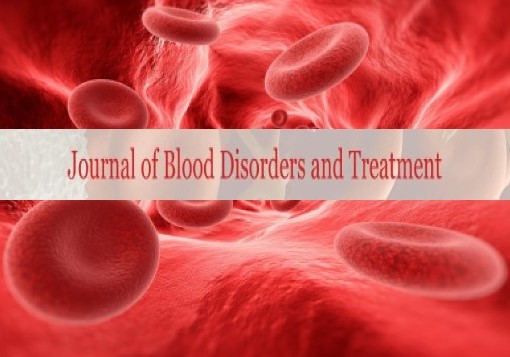Aplastic anaemia
Received: 04-Sep-2022, Manuscript No. puljbdt-23-6216; Editor assigned: 06-Sep-2022, Pre QC No. puljbdt-23-6216 (PQ); Accepted Date: Sep 20, 2022; Reviewed: 10-Sep-2022 QC No. puljbdt-23-6216 (Q); Revised: 12-Sep-2022, Manuscript No. puljbdt-23-6216 (R); Published: 30-Sep-2022, DOI: 10.37532/puljbdt.2022.5(5).06-07
Citation: Collins A. Aplastic anaemia. J. Blood Disord Treat. 2022;5(5):06-07
This open-access article is distributed under the terms of the Creative Commons Attribution Non-Commercial License (CC BY-NC) (http://creativecommons.org/licenses/by-nc/4.0/), which permits reuse, distribution and reproduction of the article, provided that the original work is properly cited and the reuse is restricted to noncommercial purposes. For commercial reuse, contact reprints@pulsus.com
Abstract
When the body ceases producing enough new blood cells, aplastic anaemia develops. You become worn out and more vulnerable to infections and excessive bleeding as a result of the condition. Aplastic anaemia is a rare and serious disease that can appear at any age.
Key Words
Anaemia; Bleeding; Hypoplastic
Introduction
Red, white, and platelet blood cells are created by stem cells in the bone marrow. The progenitor cells in aplastic anaemia are harmed. As a consequence, the bone marrow is either aplastic (empty) or has a small number of blood cells (hypoplastic).
The immune system targeting the stem cells in your bone marrow is the most frequent cause of aplastic anaemia. Other elements that can harm bone marrow and impact the generation of blood cells include.
Chemotherapeutic and radiation therapies
These cancer treatments destroy cancer cells, but they can also harm healthy cells, including bone marrow stem cells. A temporary adverse effect of these treatments may be aplastic anaemia.
Aplastic anaemia in children necessitates careful observation. For treatment (bone marrow transplant or immunosuppressive therapy)
Exposure to dangerous substances
Aplastic anaemia has been associated with toxic compounds, including some found in pesticides and insecticides and benzene, a component of gasoline. If you refrain from repeatedly being exposed to the chemicals that triggered your illness, this form of anaemia might get better.
The presence of a virus
Aplastic anaemia can be brought on by viral infections that impact the bone marrow. Aplastic anaemia has been associated with the hepatitis, Epstein-Barr, CMV, parvovirus B19, and HIV viruses.
A specific type of bone marrow failure is aplastic anaemia. The soft, fatty tissue inside of bones called marrow is where fresh blood cells are created. The body becomes prone to haemorrhaging and infection when the bone marrow produces no new cells, which is the case with aplastic anaemia. Researchers have found that the immune system of the body attacks its own tissues and organs in the majority of instances of severe aplastic anaemia. Even though aplastic anaemia is not a malignancy, it can be treated with methods used to treat lymphomas and leukaemias.
A patient receives healthy stem cells from a bone marrow transplant, which are immature cells that develop into various blood cell kinds.
These stem cells are used to replace damaged marrow, which is the squishy, fatty tissue found inside the bones. One of the first conditions for which bone marrow transplantation was discovered to be successful was aplastic anaemia.
A compatible donor, typically a sibling or other family member, donates donor bone marrow to replace the patient's non-functioning bone marrow during this treatment. Patients with severe or very severe aplastic anaemia who have not responded to drug treatment first are typically saved for bone marrow transplants from unrelated donors or donors whose bone marrow characteristics do not match those of the patient.
Through a small tube inserted into a blood vessel, transfusions transport fresh blood, including red blood cells and platelets, to a patient. Patients with severe blood cell deficiencies due to aplastic anaemia can be rapidly stabilised by transfusions, but it's extremely uncommon for them to recover permanently.
Patients with aplastic anaemia who require regular transfusions or infused medications may benefit from having a central venous catheter, a tube that transports medications to a vein in the chest. To treat or prevent heart and lung problems in patients who are deficient in certain blood components, such as packed red blood cells, blood products may be infused into the patient. To stop uncontrollable haemorrhaging, platelet infusions might be required. Patients with severe aplastic anaemia may need treatment with antibiotics, as well as antiviral or antifungal medications because fungal and bacterial infections are a significant cause of death in these patients.
If left untreated, aplastic anaemia has a very high mortality risk (around 70% within 1 year). For patients under the age of 20, the five-year survival percentage is roughly 80% overall. Long-term results for aplastic anaemia patients have been steadily getting better in recent years.
Aplastic anaemia in children necessitates careful observation. For treatment (bone marrow transplant or immunosuppressive therapy) and operations, they must remain in a hospital (bone marrow analysis, central venous line placement). Additionally, they require routine clinic appointments for physical examinations and blood draws.





